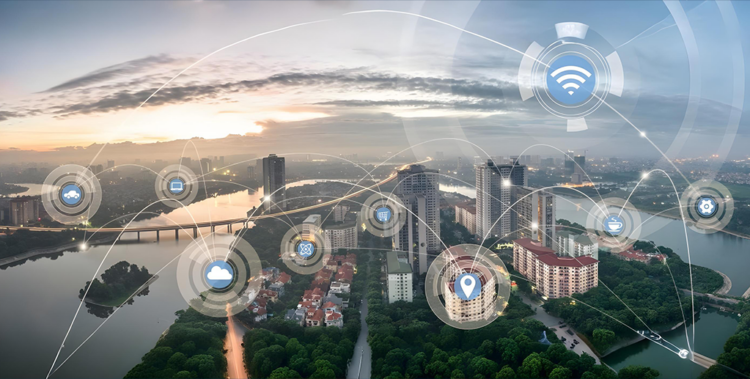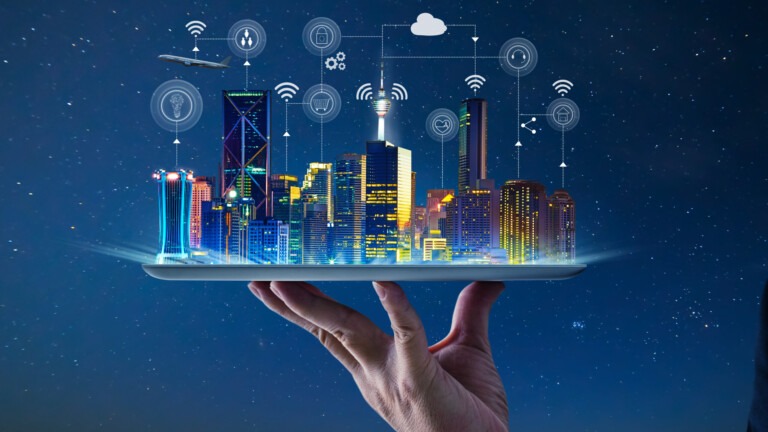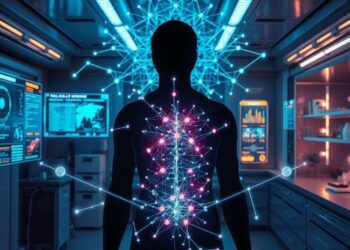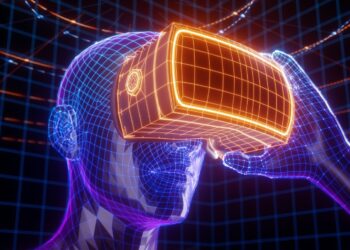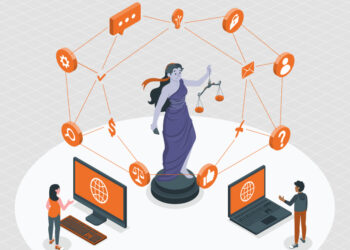In recent years, the evolution of smart cities has become one of the most exciting developments in urban planning. As technological advancements continue to accelerate, the concept of “smart cities” is transforming from a futuristic vision into an increasingly tangible reality. Central to this transformation is the Internet of Things (IoT), which is enabling cities to become more connected, efficient, and sustainable. In this article, we will explore how IoT is reshaping urban living, its potential impact on daily life, and the challenges that come with building smarter cities.
A. What Are Smart Cities?
A smart city is an urban area that uses digital technology, such as sensors, data analytics, and IoT devices, to manage and monitor its resources more effectively. These cities integrate technology into all aspects of urban life, from transportation and energy management to waste management and public safety. The ultimate goal of a smart city is to improve the quality of life for its residents while making the city more sustainable and efficient.
Smart cities utilize IoT devices to collect and exchange data in real time. For example, sensors placed on streetlights can monitor traffic flow and adjust lighting based on pedestrian and vehicle movement. Similarly, smart meters in homes and businesses can help manage electricity usage, while waste bins equipped with sensors can notify waste management services when they are full, reducing unnecessary collection trips.
B. How IoT Drives Smart Cities
The Internet of Things (IoT) is the backbone of any smart city. IoT refers to the network of interconnected devices that communicate with each other and share data through the internet. These devices range from everyday objects, like smart thermostats and wearable health trackers, to more complex systems like connected traffic lights and sensors embedded in roads. By integrating IoT into urban infrastructure, cities can achieve a level of automation and data-driven decision-making that was previously unattainable.
1. Enhanced Traffic Management
IoT plays a crucial role in improving traffic flow in urban areas. Traditional traffic management systems rely on static traffic signals and manual intervention. However, with IoT, traffic management becomes dynamic and data-driven. Smart traffic lights, equipped with sensors and cameras, can adjust in real time based on traffic volume and congestion levels. This can significantly reduce traffic jams, shorten commute times, and lower carbon emissions by optimizing the flow of vehicles.
Moreover, IoT-enabled smart parking systems can help drivers find available parking spots more easily, reducing the time spent circling around for parking and decreasing overall traffic congestion.
2. Improved Energy Efficiency
Smart cities leverage IoT to optimize energy consumption. Through IoT sensors and smart meters, cities can monitor energy usage in real time and adjust consumption patterns to reduce waste. For example, smart streetlights can automatically dim when there are no vehicles or pedestrians nearby, conserving energy during off-peak hours.
Additionally, IoT can help with the integration of renewable energy sources into the city’s power grid. Sensors can monitor the availability of solar or wind energy, and smart grids can dynamically distribute power based on supply and demand, ensuring a stable and efficient energy system.
3. Waste Management and Sustainability
Waste management is another area where IoT technology is having a significant impact. Smart waste bins equipped with sensors can detect when they are full and automatically notify waste management services for collection. This reduces the need for scheduled pickups, which are often inefficient and wasteful, leading to a more streamlined and cost-effective waste management system.
Additionally, IoT-enabled recycling systems can help cities track waste materials and optimize recycling processes. Sensors in recycling bins can identify the types of waste being deposited, ensuring that recyclable materials are properly sorted and processed.
4. Public Safety and Security
IoT is also transforming public safety and security in smart cities. Surveillance cameras, connected to real-time data analytics systems, can provide authorities with up-to-date information on potential threats or criminal activity. In addition, IoT-enabled sensors can detect hazards like gas leaks or fires, triggering automatic alerts to emergency responders and helping them take swift action.
IoT also plays a role in disaster management. For example, sensors embedded in bridges and buildings can monitor structural integrity, alerting authorities to potential risks during natural disasters like earthquakes or floods.
C. Key Technologies Driving Smart Cities
Several key technologies are driving the development of smart cities. These include:
1. 5G Networks
The rollout of 5G networks is a major enabler of smart city infrastructure. 5G offers faster speeds, lower latency, and greater connectivity, making it possible for IoT devices to communicate seamlessly and in real-time. This is critical for applications such as smart traffic management, where instantaneous data exchange is essential for optimizing traffic flow.
2. Big Data and Data Analytics
Big data and advanced data analytics are at the heart of smart cities. IoT devices generate vast amounts of data, and by analyzing this data, cities can gain valuable insights into everything from traffic patterns to energy usage. Data-driven decision-making enables city planners to implement more effective policies and improve the quality of life for residents.
3. Artificial Intelligence (AI)
AI plays a vital role in smart city systems by helping process and analyze the massive volumes of data generated by IoT devices. Machine learning algorithms can detect patterns in data and make predictions, such as forecasting energy demand or predicting traffic congestion. AI also powers intelligent systems, such as self-driving vehicles and autonomous drones, which could become essential components of future smart cities.
4. Cloud Computing
Cloud computing provides the infrastructure needed to store and process the enormous amounts of data generated by IoT devices in smart cities. Cloud platforms enable cities to store data securely, share it across departments, and provide real-time access to information for decision-makers. Cloud computing also offers scalability, allowing cities to expand their smart infrastructure as their needs grow.
D. Benefits of Smart Cities Powered by IoT
The integration of IoT into urban environments offers numerous benefits, including:
1. Enhanced Quality of Life
Smart cities improve the quality of life for residents by making everyday activities more efficient and convenient. From reducing traffic congestion to optimizing energy usage, IoT technologies create a more comfortable and sustainable living environment.
2. Greater Efficiency
By automating various systems, smart cities become more efficient in managing resources like energy, water, and waste. This reduces costs and improves service delivery to residents.
3. Sustainability
One of the primary goals of smart cities is to promote sustainability. IoT-enabled systems can help reduce energy consumption, minimize waste, and promote the use of renewable resources, contributing to a more sustainable urban future.
4. Better Public Services
Smart cities can provide better public services by using data and automation to improve efficiency. Whether it’s waste management, healthcare services, or emergency response, IoT allows cities to optimize public service delivery.
E. Challenges of Building Smart Cities
Despite the many advantages of smart cities, there are several challenges to overcome:
1. Privacy and Security
The widespread use of IoT devices raises concerns about privacy and data security. As cities collect and process massive amounts of data, ensuring that this information is protected from cyber threats is a critical concern. Governments and private companies must work together to establish robust cybersecurity protocols.
2. High Costs
The infrastructure required to build a smart city can be expensive, and many cities face budget constraints. While the long-term benefits of smart cities can outweigh the initial costs, securing funding for these projects can be a significant challenge.
3. Data Management and Integration
With so many IoT devices generating data, managing and integrating this information can be complex. Cities need sophisticated data management systems that can store, process, and analyze data efficiently while ensuring its accuracy and reliability.
4. Social Equity
As smart cities are developed, it is crucial to ensure that all residents, regardless of their socioeconomic status, benefit from the advancements. Ensuring equitable access to smart technologies is key to avoiding the creation of digital divides in urban areas.
F. The Future of Smart Cities
As IoT technology continues to evolve, the future of smart cities looks promising. With advancements in 5G, AI, and cloud computing, cities will become even more connected and efficient. However, challenges like privacy concerns, cybersecurity, and social equity must be addressed to ensure that smart cities benefit all residents.
The future of urban living will be shaped by these innovations, transforming cities into more sustainable, efficient, and livable environments. As cities around the world embrace smart technology, the potential for a more connected, efficient, and sustainable urban future is within reach.

